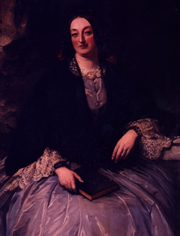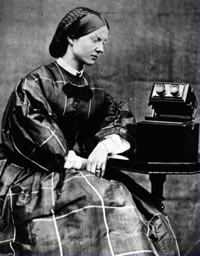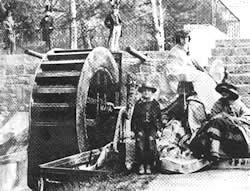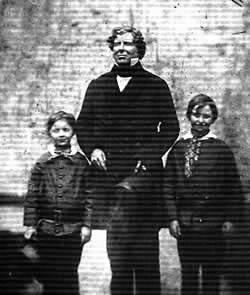Great Irish Women part 4 - Mary Field Rosse
FIRSTLY I must apologise for not getting back to this series before now, I’ve been aware of the time that has lapsed since the last one but I just haven’t had the time.
Since my last entry (and before) I’ve been given loads of tips (as well as a great book from Sinead) on who I should include, enough in fact to have this series run for a very long time indeed. And certainly enough to put an end to any notion of there being no great Irish women.
This time the title goes to Mary Field Rosse, a pioneer in photography which was a massive pull for me to choose to write about this time.
Many people may not be aware of the impact women had on the early days of photography. And yes it is a class thing. You probably wouldn’t have found many women photographers in the working class areas of Dublin in the 1850s but I will be writing about more great women who had poverty to overcome as well as the multitude of barriers placed in front of them in the weeks to come and I promise this will be the main criteria for choosing the next one.
It was because of affluence that there were so many women pioneers in the early days of photography but that doesn’t lessen their achievements any.
Mary Rosse, nee Field, was born in Bradford, the eldest child of John Wilmer, in 1813. After marrying William Parsons in 1836 the couple were invited to live in Birr Castle by William’s father.
Held in high regard by the people of Birr, Mary made many improvements to the interior of the castle. During the Great Famine 1845 -1847 Mary financed many relief works and employed 500 men in construction work around the castle.
Birr Castle at that time was also the home to the largest telescope in the world until in 1917 the Mount Wilson telescope was built in Southern California. The telescope and its users uncovered secrets of Jupiter and the nebulae.
Not only was Mary a leading light in the early days of photography which I will be going into but she was also an accomplished blacksmith and was responsible for iron work on the great telescope as well as the magnificent gates to the Birr Castle estate, which are still in use today.
In fact Mary’s experiments with photography probably started the beginning of the end of the great telescope as it was not suitable for celestial photography due to the nature of how the telescope was mounted.
In June 1842 Mary’s husband began to experiment with a photographic process daguerreotypes, she began to work with stereoscopic photography. This type of photography was invented in 1848 and made it possible to buy stereo photographs of places from all over the world. There are still some of Mary’s stereoscopic works in good condition archived by Birr Castle.
At that stage photography was definitely more science than art with lots and lots of chemistry and a darkroom was built in the 1850s in one of the rooms of Birr Castle. At that time photographers made their own sensitised plates from glass slides with silver nitrate.
I find it astounding and wonderful, and how I wish I had been there, that the darkroom was only rediscovered since the mid-nineteenth century in 1983. WOW. Seriously wow, when the room in the castle was uncovered virtually intact, how was it not found? they found equipment, chemicals and prints. Described as a photographic time capsule its discovery was an exciting date in the history of photography.
The darkroom
At the time her husband was in regular contact with William Fox Talbot who invented negative/positive photography and during one correspondence he said: “Lady Rosse has just commenced photography, and I enclose a few specimens of her first attempts, presently she will do better.”
Fox Talbot replied: “Surely there are portions exhibiting the details of the telescopes that are all that can be desired.”
Eventually through his help her photographic documentation of the famous telescope was exhibited at the Photographic Society’s first show in London. She was honoured with the Society’s Silver Medal in 1859, the first person and indeed woman to be bestowed with such an honour. She was also a founder of the Irish Photographic Society (I have hunted high and low to find out when it was founded and came up with nothing on the internet, if anyone can enlighten us please do!).
Mary’s work documented Birr Castle and it’s environs and they proved invaluable in the castle’s restoration in recent years. In fact her photographs of the telescope enabled it to be rebuilt more than 150 years later.
Sadly she lost seven of her eleven children but her intellectual but strict childrearing enabled one of her sons Charles Parson to become an imminent engineer.



Some of Mary's amazing work
The sources for this can be found here, here and here and do check out Birr Castle here.
That’s it for now, maybe I should do a straw poll on which fantastic Irish woman I should do next? Would you like a list of proposed subjects?
Technorati tags: redmum irishblogs Great Irish Women Mary Field Rosse
4 comments:
Have mean't to visit since seeing you on the tv. Perhaps you yourself will feature in something similar to this 'great Irish women' coverage in the future.
I love that image of the dark room, what a treasure to discover. How times have changed, I never go anywhere without my digital camera in my pocket ... no chemicals or hours in the dark room necessary anymore .. however I have done a bit of work in dark rooms and its a wonderful craft to get involved in.
www.irishcraftworker.typepad.com
Straw poll please. There are so many women to choose from!
Bring on the list and let us choose.
Interesting post. My mother is from Ahascragh, Co. Galway and when she was growing up there was a "big house" called Clonbrock House. The lady of the house Augusta Dillon was big into photography which was quite unusual for that time. The National Library of Ireland have obtained a collection of 2000 Clonbrook House photos/glass plates. Its absolutely amazing and wonderful that old images of our heritage are preserved so well. The Clonbrock catalogue can be viewed here: http://www.nli.ie/new_cat.htm
Post a Comment